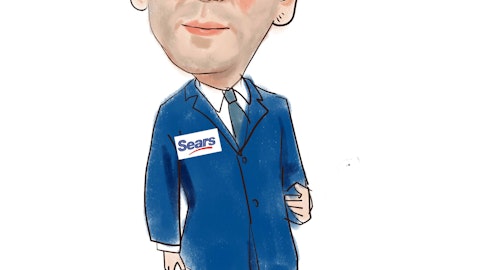Types of Business Development Companies
BDCs come in many different varieties, including which industries they specialize in, as well as what types of loans they make. For example, Hercules Capital Inc (NYSE:HTGC) specializes in technology companies, while Pennantpark Floating Rate Capital Ltd (NASDAQ:PFLT) deals exclusively in floating rate loans, which rise when interest rates do.
However, arguably the most important distinction that a potential BDC investor must make is between internally and externally managed BDCs.
This is because externally managed BDCs (the majority of the industry) have higher cost structures because the management team doesn’t actually work for the company. Rather, management is provided by an external financial company, one that usually specializes in large scale mid-market lending and is paid a hybrid fee structure consisting of a base rate (usually 1-2% of gross assets) and a performance fee. The performance fee is usually 20% of net asset value, or NAV growth above a predetermined fixed hurdle rate.
In addition to a higher cost structure, there are two main downsides of externally managed BDCs. First, management doesn’t actually have to disclose its compensation information. For example, John F. Barry III, CEO of Prospect Capital Management, the manager of BDC Prospect Capital Corporation (NASDAQ:PSEC), was reported by insiders to be making $100 million annually (3) over the past few years, as part of management’s overall pay of $247.2 million last year, or approximately 31% of total revenue.
This leads to the second potential risk with externally managed BDCs, potential conflicts of interest. Specifically, management can guarantee itself a higher payday as long as it grows gross assets, which can be defined in a variety of ways.
For example, Prospect Capital Corporation (NASDAQ:PSEC) (which I consider to be an example of bad BDCs to avoid) includes debt and cash that’s not yet invested in its asset calculations. In other words, management is free to sell as many new shares as it wants, as well as take on extra debt, to grow its fees, even if the resulting shareholder dilution destroys investor value over time.
This has been what Prospect has done for years, with the resulting massive shareholder dilution and excessive management fees resulting in decline shareholder value (NAV) and a series of dividend cuts that have caused shares to decline over time (PSEC trailed the market by nearly 9% per year from 2011 through 2015).
Or to put it another way, Prospect, as well as some other externally managed BDCs, can be run more like a publicly traded hedge fund, for the enrichment of management first, and investors second.
In contrast, internally managed BDCs such as Main Street Capital Corporation (NYSE:MAIN), Triangle Capital Corporation (NYSE:TCAP), and KCAP Financial Inc (NASDAQ:KCAP) generally have lower costs due to a lack of external management fees, as well compensation incentives that are better aligned with shareholders because usually they are based on growth in NAV per share.

Source: Main Street Capital Investor Presentation
This means that management can’t get a raise unless it is consistently creating shareholder value, which often comes in the form of growing dividends. Better yet, because internally managed BDCs don’t pay their executives as a percentage of assets, internally managed BDCs can achieve better economies of scale as they grow. This means that earnings per share grow, making the dividend more secure and capable of better long-term growth.
So obviously the secret to BDC investing is just to stick with internally managed ones, right? Not necessarily, because as with most things in the world of investing, there are few black and white absolutes.
There are actually several good reasons that one might choose to own an externally managed BDC. For example, take a look at one of the largest BDCs, Ares Capital Corporation (NASDAQ:ARCC). Ares Capital is managed by Ares Capital Management, one of the world’s largest specialty finance companies with $95 billion in asset under management and operations across the globe.
This gives Ares Capital Corporation (NASDAQ:ARCC) access to potential customers and deals that smaller, internally managed BDCs without major sponsors like Ares couldn’t hope to do. In addition, not all externally managed BDCs are run by shareholder unfriendly management teams.
For example, some have much lower base management fees of just 1% and exclude things like cash and credit revolvers from their gross asset calculations.
As you can see in the list of business development companies below, the cost structure for externally managed BDCs varies widely, with some of the larger externally managed ones able to leverage economies of scale into lower expense ratios than even some internally managed BDCs.

Source: BDC Buzz
So if one can’t simply use a rule of thumb for BDC investing, how does one go about navigating this often confusing and high risk world of sky-high yields, built upon a tower of subprime lending and investments? The answer requires us to first understand the key risks involved with the BDC industry, followed by a look at its most important metrics.





